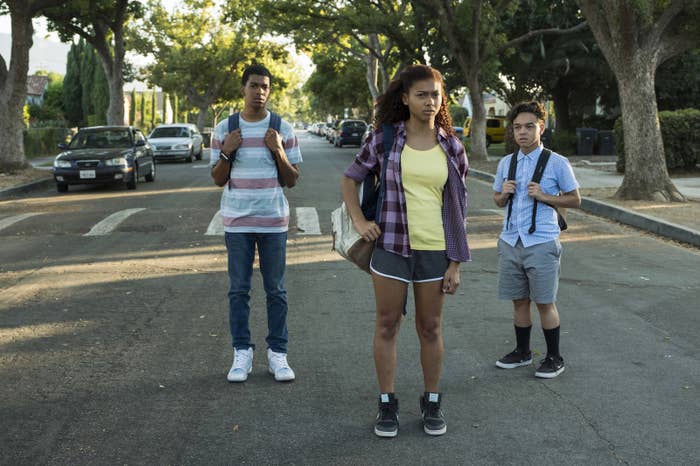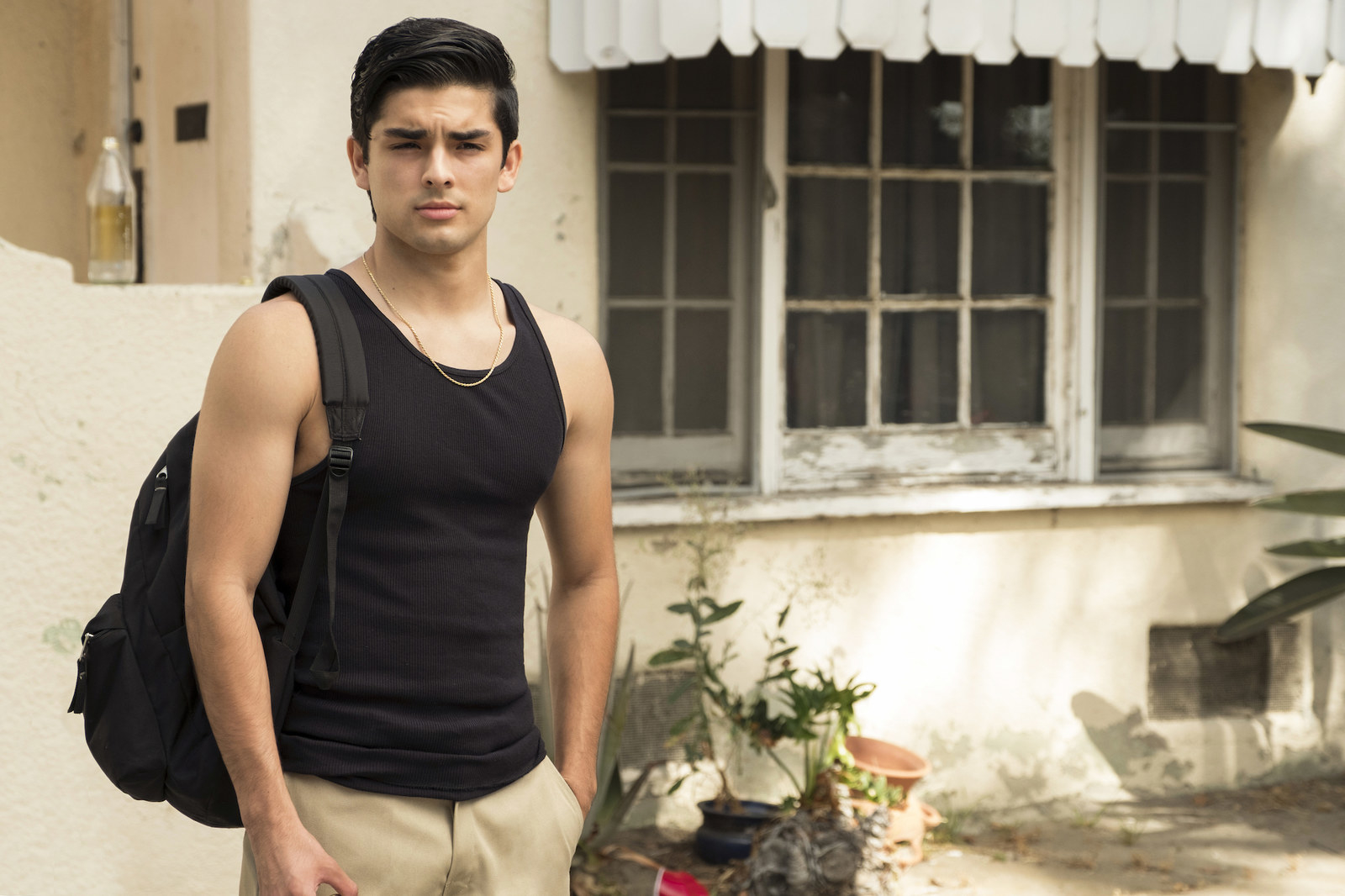(1/4)Yesterday, the members of @AMarch4OurLives got to meet up with some of the most wonderful and most strong spoken students of Chicago. "Florida's safest city" and one of the cities in America most affected by gun violence came together to share stories, ideologies, and pizza. https://t.co/3SIDgvAnDM
Earlier this month, a group of kids from Chicago and Parkland met in Florida to eat pizza, go swimming, and talk about the guns that were haunting their lives.
Flown to the home of Emma González, the Marjory Stoneman Douglas survivor who has become the face of the #NeverAgain movement, the six high school students from Chicago’s West and South sides shared what it’s like to grow up amid the constant threat of gun violence, rather than have it appear as if from nowhere. (González and other Parkland students later visited Chicago themselves March 17.)
“Those who face gun violence on a level that we have only just glimpsed from our gated communities have never had their voices heard in their entire lives the way that we have in these few weeks alone,” González tweeted after the poolside meeting. “People of color in inner-cities and everywhere have been dealing with this for a despicably long time, and the media cycles just don't cover the violence the way they did here.”
As protesters prepare to descend on Washington, DC, on Saturday for the March for Our Lives demonstration, a little more than a week after an estimated 1 million students and teachers walked out of class in honor of the Parkland victims, some in disadvantaged, inner-city neighborhoods are working to ensure they are not excluded from the reenergized national conversation on guns — and wondering why their stories have long been overlooked.
But for the new Netflix series On My Block, “the timing couldn’t be more crazy and important,” show co-creator Lauren Iungerich told BuzzFeed News.

The show, which follows a group of black and Latino high schoolers growing up in the fictional Los Angeles suburb of Freeridge, does not focus entirely on gun violence, but it also can’t avoid the issue. As co-creator Eddie Gonzalez put it, “it is part of the fabric of the neighborhood,” where easy access to guns can lead to tragedy.
“It’s happening on the South Side of Chicago, it’s happening in Texas, it’s happening everywhere,” he said.
Though they may not garner the same headlines as a single, devastating mass shooting, near-daily episodes of gun violence continue to plague major US cities. So far in 2018, four teens have been killed in Washington, DC; three in St. Louis; three in Memphis; three in Salt Lake City; three in Denver; and three in Atlanta, according to the nonprofit Gun Violence Archive, which defines a teen as being age 12–17. The violence is particularly horrific in Chicago, where nine teens have been killed and 60 injured due to guns.
“Sadly, guns are a way of life in the areas like where I grew up,” said Gonzalez, who was born in Compton and raised in Lynwood. His own life inspired the setting and stories in On My Block, a coming-of-age story about four characters — Cesar (Diego Tinoco), Ruby (Jason Genao), Monse (Sierra Capri), and Jamal (Brett Gray) — and how they navigate growing up in the inner city.
The show, which premiered on March 16, features a storyline in which Cesar joins a gang the summer before he enters high school. His older brother, Oscar (Julio Macias), sees this as a way to protect and look after him, but Cesar’s gang involvement comes to a head in the finale when a rival gang member crashes a quinceañera and two characters are injured in the crossfire.
“Seeing two characters who are innocent and are in the line of fire as a consequence of another character’s actions is kind of reflective of what’s going on in our country today,” Iungerich said. “Everywhere, kids are becoming innocents who are in the line of fire and have nothing to do with a situation, but become the victims.”
“Just when you think their world is safe, it’s not totally safe,” Iungerich said. “No world is totally safe, and I think that’s what interesting with what’s happened with Parkland.
“Our world hasn’t been safe for a while. Kids have not been safe —it doesn’t matter what neighborhood you’re in.”

In 2016, the pro–gun control group Everytown for Gun Safety wrote a report on urban gun violence, concluding that 9 out of 10 homicides in some cities are committed with a gun.
Most gun violence in cities is concentrated in a small geographic area among a small community of high-risk people, the report found, partially attributing this to gangs. “But whole neighborhoods suffer the consequences, as bystanders get caught in the gunfire and young people exposed to violence face a higher risk of later participating in it themselves,” the report read. “And all of this has a disproportionate impact on communities of color, who are more likely to live in areas [beset] by these issues.”
Gonzalez does not want On My Block to be a “preachy show” that puts issues ahead of plot, but he hopes the show makes people consider gun control more carefully and realize that gun violence extends well beyond lone wolf shooters in suburban schools.
“We don’t go on these diatribes or long speeches about how guns should be controlled,” Gonzalez said. “I think it shows the harsh reality of a system where there’s a lack of gun control, and I’m hoping that it promotes conversation about that.”
Much like the Parkland tragedy has shaken the country’s consciousness, On My Block’s creators hope their show prompts an awakening of sorts.
“The conversation I think we need to have now is, are we numb to this? Are we numb to gun violence in our world?” Iungerich said. “Are we numb to it, or do we feel empowered to make changes about it? Because I do think you can see through the course of the show the kids are not numb to it. It’s part of the fabric of their lives but they’re not numb to it.”
